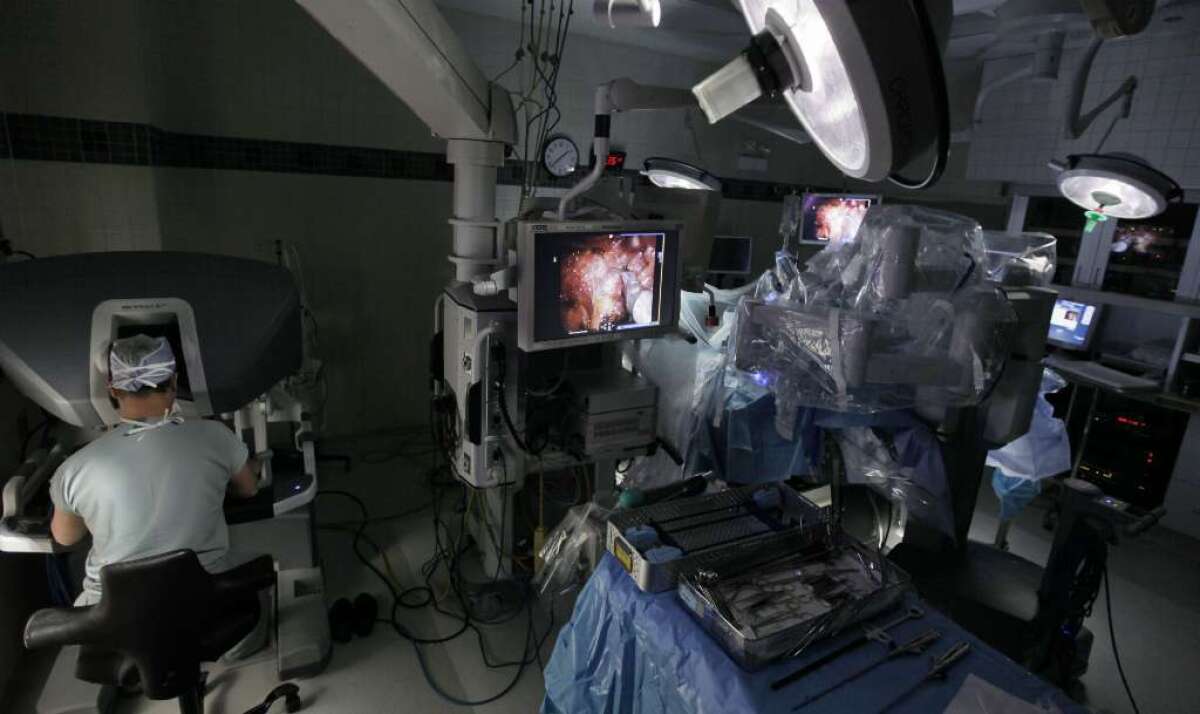Surgery reduced risk of death by 44% in men with prostate cancer

A long-term study of men diagnosed with early-stage prostate cancer in the late 1980s and 1990s concludes that those who were treated with surgery were much less likely to die of the disease -- or of anything else --than those whose prostates were left in place and received close monitoring from their doctors.
The study, which appears in Thursday’s edition of the New England Journal of Medicine, also finds that the more time that passed since their diagnosis, the greater the benefits of early surgery became.
The 695 men in the Scandinavian Prostate Cancer Group Study Number 4 all hailed from Sweden, Finland or Iceland, and all had localized tumors. Researchers randomly assigned 347 of them to radical prostatectomy and the remaining 348 to “watchful waiting.” (For a variety of reasons, only 294 men in the surgery group actually got the operation, and 294 men in watchful-waiting group were able to avoid “curative treatment.”)
RELATED: Foods that affect your risk of cancer
As of Dec. 31, 2012, 63 men in the surgery group and 99 men in the watchful-waiting group had died of prostate cancer. That means that men who were assigned to have their prostates removed were 44% less likely to have died of the disease, the study authors report.
More broadly, 200 men in the surgery group and 247 men in the watchful-waiting group had died of any cause by the end of 2012. That means men assigned to surgery were 29% less likely to have died, the study says.
Men assigned to watchful-waiting were significantly more likely than their counterparts to have their prostate cancer spread elsewhere in the body. Those metastases weren’t necessarily life-threatening – many of the men whose tumors had spread died of something other than prostate cancer.
However, when metastases were detected, that often led to palliative treatment with hormone therapy, which is designed to suppress levels of testosterone and dihydrotestosterone in the body to make cancer cells stop growing. The side effects of the therapy were “strongly associated with reduced quality of life,” according to the study. (The American Cancer Society lists impotence, reduced libido, loss of muscle mass and depression among the side effects of hormone therapy.)
On the plus side, about one-third of the men in the watchful-waiting group did not see their disease spread. As a result, they were able to avoid surgery, hormone therapy and other disruptive treatments despite getting a cancer diagnosis.
The research team in charge of the study has been following these men for up to 23.2 years, and the longer they had tracked them, the more they’d been able to say about the benefits of radical prostatectomy. For instance, surgery was particularly helpful for men under the age of 65 and men with tumors judged to be of intermediate risk. Also, after keeping tabs on the men for 10 years, the researchers calculated that doctors would need to treat 20 men to prevent one death; 18 years out, that number had dropped to eight.
RELATED: Urologists say most men may skip PSA test for prostate cancer
The Scandanavian study began around the time that doctors began screening men for prostate cancer by measuring the level of prostate-specific antigen in their blood. The men in this study were not diagnosed through PSA screening.
Meanwhile, researchers in the U.S. have been conducting another large, long-term study comparing radical prostatectomy and watchful waiting in men whose cancers were picked up as a result of PSA screening. That effort, known as the Prostate Cancer Intervention versus Observation Trial, or PIVOT, found that men assigned to have surgery were just as likely to die during a 12-year period as men who were assigned to close monitoring by their doctors.
The authors of the new Scandinavian study noted that use of PSA screening in PIVOT makes it difficult to compare the results of the two studies. For one thing, the cancers in the U.S. study could have been caught at an earlier stage, so the effects of surgery relative to watchful waiting might take longer to become apparent.
“PSA screening profoundly changes the clinical domain of study,” they wrote in the New England Journal of Medicine.
If you’re interested in the latest scientific and medical studies, you like the things I write about. Follow me on Twitter and “like” Los Angeles Times Science & Health on Facebook.







